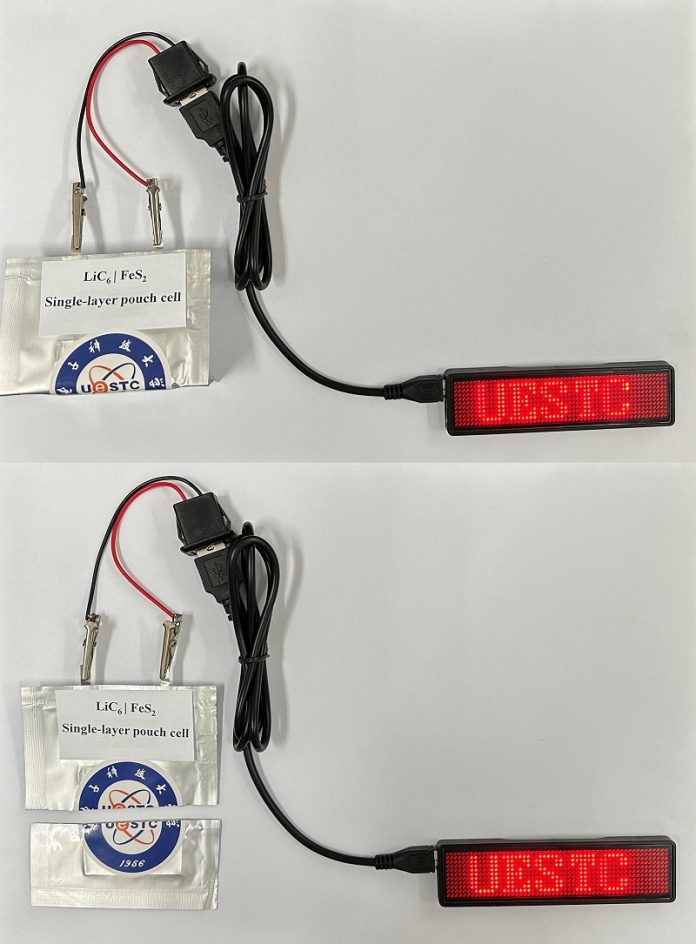
Lithium-ion batteries are commonly used in devices like phones, e-bikes, and handheld vacuums.
However, these batteries have some downsides: they can wear out quickly and even catch fire if damaged.
To make safer and more durable batteries, researchers are now exploring lithium-sulfur (Li-S) batteries as an alternative.
A team of researchers, led by Liping Wang, has developed a new type of Li-S battery that could solve some of these problems.
Their findings, published in ACS Energy Letters, show that the new battery design stays stable over many charge-discharge cycles and can even continue working after being folded or cut.
Sulfur is a promising material for Li-S batteries because it’s cheaper and can store more energy than the materials used in traditional lithium-ion batteries, like lithium-metal oxides.
However, sulfur-based batteries face their own challenges.
For example, in previous designs, sulfur from the cathode (the battery’s positive electrode) would dissolve into the liquid electrolyte, the substance that separates the battery’s two electrodes.
This created a solid block inside the battery that prevented it from working properly.
To solve this issue, Wang and his team decided to add a protective layer between the cathode and the electrolyte.
They tried different polymer coatings on the iron sulfide cathode and found that polyacrylic acid (PAA) worked best. In early tests, this coating helped the battery keep its capacity, even after 300 charge-discharge cycles, meaning it could last much longer than traditional batteries.
The team then built two types of battery prototypes: a pouch cell and a coin cell. The pouch cell is flat and flexible, while the coin cell is small and round.
After testing the pouch cell for over 100 charge-discharge cycles, they found no significant loss of capacity, showing that the battery could keep working efficiently. Even more impressively, the pouch cell continued to work after being folded and cut in half, proving that the design is both durable and safe.
The coin cell also performed well, retaining 72% of its capacity after 300 charge-discharge cycles. This is a significant improvement over current lithium-ion batteries, which tend to lose capacity faster.
Wang’s team also applied the PAA coating to cathodes made from other materials, such as lithium-molybdenum and lithium-vanadium. These batteries also showed stable capacity over 300 cycles, suggesting that this coating could be used to improve the performance of other types of metal sulfide batteries as well.
Overall, this research shows that coated cathodes can lead to safer, longer-lasting Li-S batteries. These new batteries could be a game-changer for portable electronics and electric vehicles, providing a more reliable and sustainable energy source for the future.



